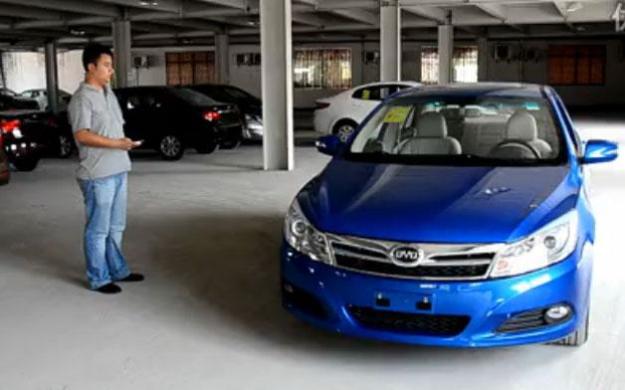
Chinese cars have gotten a lot of flak over their extremely liberal (read: blatant and unapologetic) use of other manufacturer’s designs. A quick glance at the BYD F3 and you can see more than a passing resemblance to the Toyota Corolla. The successor to the F3, the Su Rui carries on in much the same manner as its predecessor, a sentiment shared by Car News China when it described the new F3 as nothing more than a copy of the new Corolla, albeit a less blatant one. But we’re not here to harp on BYD’s somewhat shady practices. Instead, where here to praise the automaker’s innovative new feature found in the latest F3: the ability to control the car via remote control.
You read that correctly, a remote control car. Only much larger than the kind we all played with in our youth. According to Cars News China report, BYD says the remote control feature is best when utilized as a parking aid in tight spots or as an informal valet service when it’s raining outside and the urge to get wet is non-existent.

As you can imagine, the remote control function allows the car to be started remotely (surprise!) and driven in all directions. There are a few limitations to the feature. Distance for controlling the vehicle remotely is restricted to 10 meters, and the speed of the vehicle when operated in this manner is limited to snail-like two kilometers per hour, which converts to just over a mile per hour. It’s not particularly fast by any stretch, but crashing a remote-controlled car that weighs a few thousand pounds will have greater repercussions than our old RC cars did during our snot-nosed youth.
Other than serving as an oversized toy, there is a real car under that familiar Toyota, ahem, we mean BYD, hood. The Su Rui is available with a 1.5-liter four-cylinder with 109 horsepower mated to a five-speed manual , or a 1.5-liter turbo four that can dish out 154 horsepower. It comes with the option of either a six-speed manual or six-speed automatic transmission. The remote control feature comes standard with the 1.5 turbo automatic.

Needless to say, we are rather impressed by what BYD has done. Despite its limitations, there is no reason the technology could not be expanded upon further and allow for greater control distances and increased speed. For now though, we’re willing to make some concessions for safety-sake.
Oh, and Toyota , if you’re reading this, you might want to consider implementing something similar in the Corolla. By now we imagine you’re owed a few freebies by BYD, which much to our surprise does not stand for “Borrowing Your Design.”


